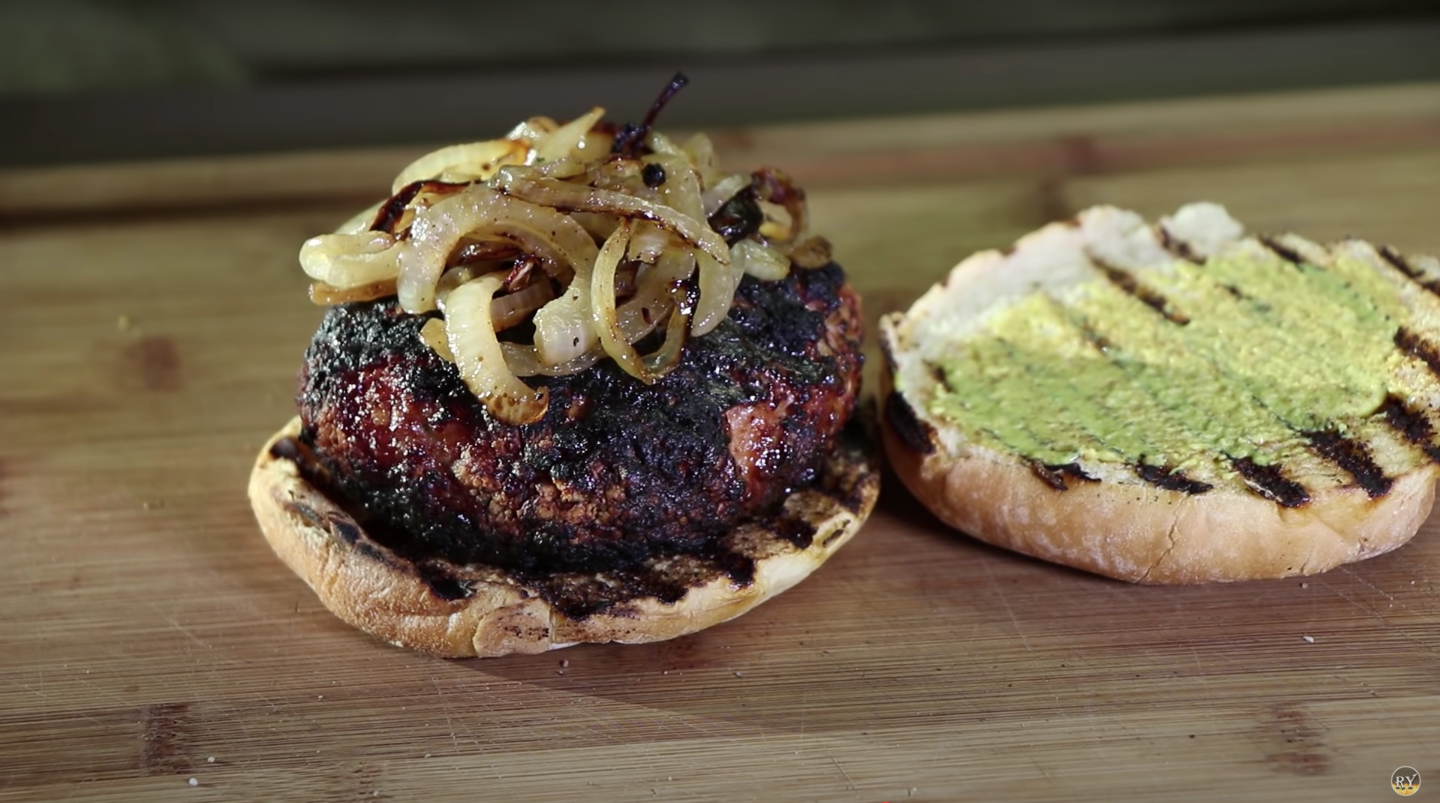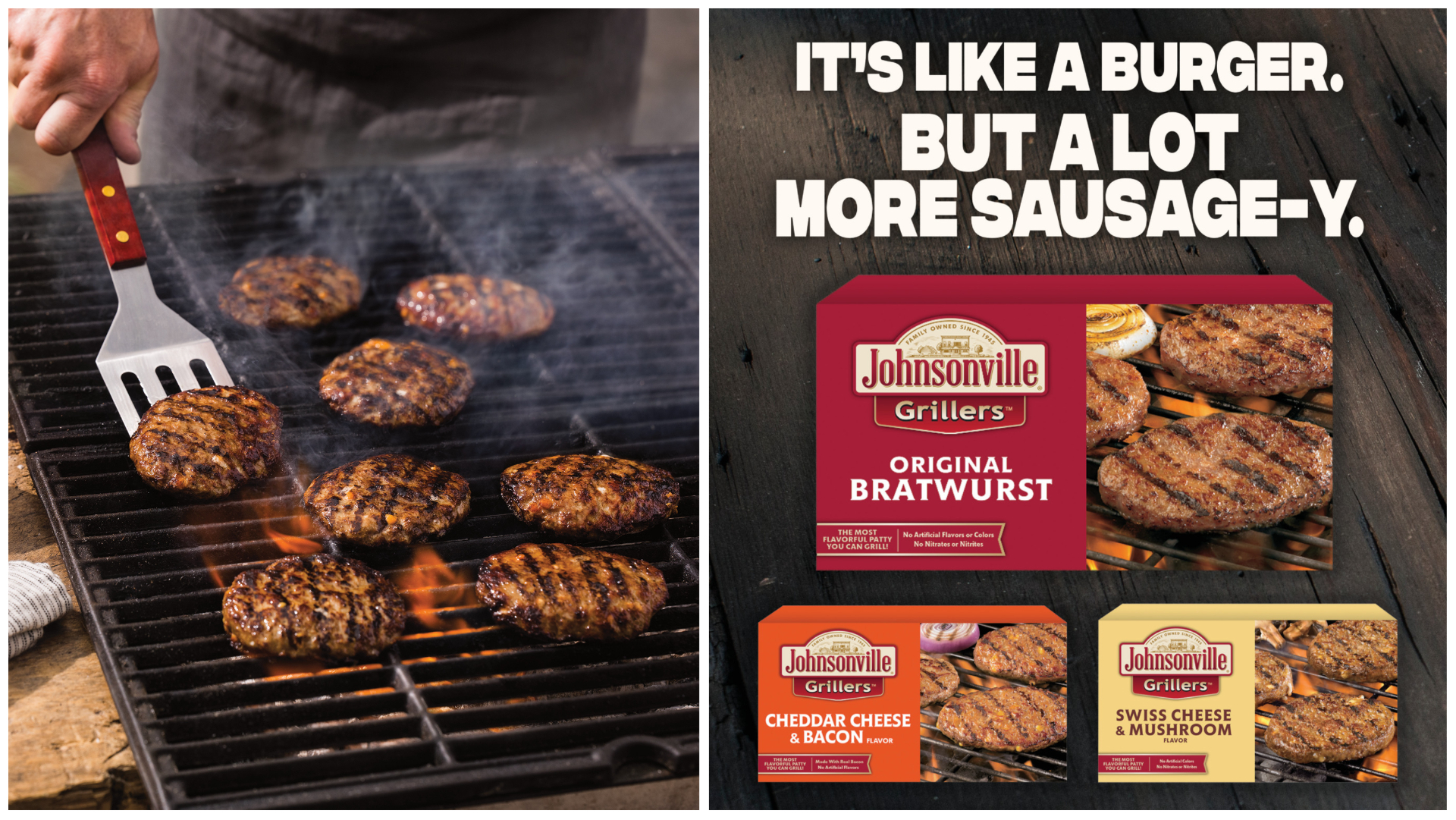The Brat Burger, Wisconsin's Stroke Of Grilling Genius
Brat burgers offer all the same flavor without the need for finesse.
At the risk of stating the obvious, there's no shortage of bratwurst anywhere you go in Wisconsin. Just over the Illinois border in Kenosha, there's the Brat Stop with its traditional "Our Wurst is Furst!" brat. In Milwaukee, there's the family-run Usinger's sausage shop as well as The Brat House, a brew pub that serves Usinger's brats. (The menu now includes a vegan "Beyond Bratwurst" option too.) Near the Minnesota border, in Hudson, Wisconsin, it's RJ's Meats, which does wild game processing and about 40 different bratwursts, including a chicken enchilada flavor.
No matter where you go in the Badger State, there's always a big debate about how to cook the perfect brat. (My dad grew up in Sheboygan, Wisconsin, aka the Bratwurst Capital of the World.) And yes, you can burn a brat if it's not cooked right.
That's why many grillers have turned to the brat patty, a flat hamburger-like bratwurst, for their football season needs.
How the brat was born
The brat patty has only been around for the past 40 years or so, which is a drop in the bucket of bratwurst's roughly 700-year history. Many cite Nuremberg, Germany's city council definition of a bratwurst recipe in 1313 as a starting point for the beloved sausage.
"Sausage makers made up a sausage by grinding up the scraps they had and adding seasonings," says Chuck Miesfeld, president and owner of Miesfeld's, a family-run meat market shop in Sheboygan, Wisconsin that's been around since 1941 when his grandfather started the company. "That's how they got the bratwurst. It's gotten more refined as years have gone on. It's not scraps today, at least not ours."
Sometime over the past few decades, the sausage started shedding its casing and flattening out into patties. Now the two forms of brat exist side by side.
Brats vs. bratwurst patties: What’s the difference?
These brat patties—aka brat burgers—are essentially bratwurst sausages without the casing. Instead of being purchased as links, brat burgers are large, flat circular patties, like a massive breakfast sausage patty you put on a bun.
Bratwurst can be made of a blend of meats, but usually, it's ground pork, salt, pepper, nutmeg, and a blend of secret spices. Instead of stuffing everything into a casing tube, the meat blend is formed into a circular brat patty sans casing.
"A brat patty is another way to eat the same thing in a different form," says Louis K. Muench, assistant manager of Louie's Finer Meats in Cumberland, Wisconsin whose grandfather started the business in 1970. "It took off as a tailgate item at stadiums all over the country."
Most spots that offer brats now include the patty as one of their options. At the Brat Stop, there's the "build-a-burg," while The Brat House sells the "Belly Buster," a brat patty and beef patty with cheddar cheese and sautéed onions on a bun. At RJ's Meats, the popular patties are currently sold out.
Tips for grilling brats and brat burgers
To understand why some people are turning to brat patties, it's important to understand the art of cooking a traditional bratwurst.
"If you want the real way, the Sheboygan way, you never parboil a brat," Miesfeld says.
Soak the bratwurst in cold water for 3-4 minutes before putting it on the grill. That makes the casing more pliable to reduce your chances of splitting the casing during cooking, Miesfeld says.
A charcoal grill is ideal, but make sure it's already burned down to a white coal before grilling, and keep the brats moving as they cook. "You don't want a lot of fire or [to keep it] too close to the coals where the brat burns and splits," Miesfeld says. "Keep turning it and rotating it."
Whether you use a charcoal or gas grill, you want the bratwurst to get browned up enough so the casing is tender, Muench says.
The key is going "slow and low," says Brittany Wagner, associate brand manager for Johnsonville Sausage, which is headquartered in Sheboygan Falls, Wisconsin.
"You don't want high flames, high heat," she says.
To make that happen, Wagner says it's best to time grilling bratwurst with another time-honored tradition: drinking.
"Way back in the day, Ralph would drink an old fashion while the grill was heating up, have a second old fashion while he was making them, and then enjoy his third," says Wagner, stepdaughter of former Johnsonville CEO Ralph C. Stayer. "There's definitely an art to cooking bratwurst."
Many people use a sacred "brat bath," aka the "beer bath," which blends beer, butter, and onions. The idea started as a way to keep brats warm without drying them out, Miesfeld says—particularly useful if you're grilling a whole bunch of them at once for a party.
"But that's only to keep it warm until you're ready to serve," Miesfeld says. "It has nothing to do with cooking. You don't want to leave it in too long, because you'll lose some of the flavors of the bratwurst."
Miesfeld's recipe: In a 5-quart container, add two cans of beer, a quarter stick of butter, and sliced onion. Make sure the brats are submerged with about an inch or so of liquid on the bottom to keep them soaking, but not floating, he says. The idea is to steam the brats, not boil them.
The steam that comes off from the beer bath will keep the bratwurst from drying out, says Miesfeld, who recommends cooking brats only for 7-8 minutes.
Okay, so why the brat patty?
With a brat patty you don't have to worry about brat casings bursting. Treat it like a hamburger patty, cooking it for a couple minutes on one side and then another.
"It's a lot easier to cook, and it cooks much faster," says Miesfeld, who sells more than 50 types of bratwurst, including his two most popular varieties: Grand Champion and Jalapeno and Cheddar.
A brat burger isn't just easier to cook—it's easier to eat, too. Unlike a bratwurst, which can burst and squirt "juice," a brat patty's got all the flavor and none of the mess.
"Some people don't like it when the casing cracks or pops when you take a bite of it, so a brat patty is more convenient," says Tiffany Ingelse, assistant general manager at Miesfeld's.
It's why Johnsonville launched its now popular line of burger-style griller sausages nearly a decade ago. Johnsonville Grillers Original Bratwurst Patties come in a variety of flavors, like cheddar cheese and bacon.
"If you think about a regular hamburger patty, if you soak it in a beer bath, it's probably going to crumble and fall apart," Wagner says. "But sausage, just by nature of how it's made, binds everything together and traps in all the flavors of the spice blend. We soak everything in beer."
The best way to serve a brat patty
You can put brats or brat patties on a pretzel bun, or a Sheboygan hard roll, a white bread bun that has a crusty exterior and a spongy soft chewy inside. After that, it's time to start noshing.
Many locals are known to do the "double brat," or laying sausages side-by-side on a roll. Meanwhile, Louie's on the Lake in Cumberland, Wisconsin serves "The Big Louie Burger," which doubles up with a ground beef patty and a brat patty on the same bun.
Just like a Chicago-style hot dog, mustard is the standard condiment for a brat burger, not ketchup. Add beer-braised caramelized onions and you're good to go.
As for what type of mustard, Muench recommends Silver Spring's Beer'n Brat Mustard, made by a family-owned business in Eau Claire, Wisconsin. The horseradish flavor is "surprisingly strong," Muench says—so if you're a newbie to the brat world, you might want to start with the Whole Grain Mustard, which is more subtle.
Regardless of the form—link or patty, hard roll or pretzel bun—both bratwurst and brat burgers are easy grab-and-go items, perfect for any grilling occasion. Add them both to your grill grates this season.

